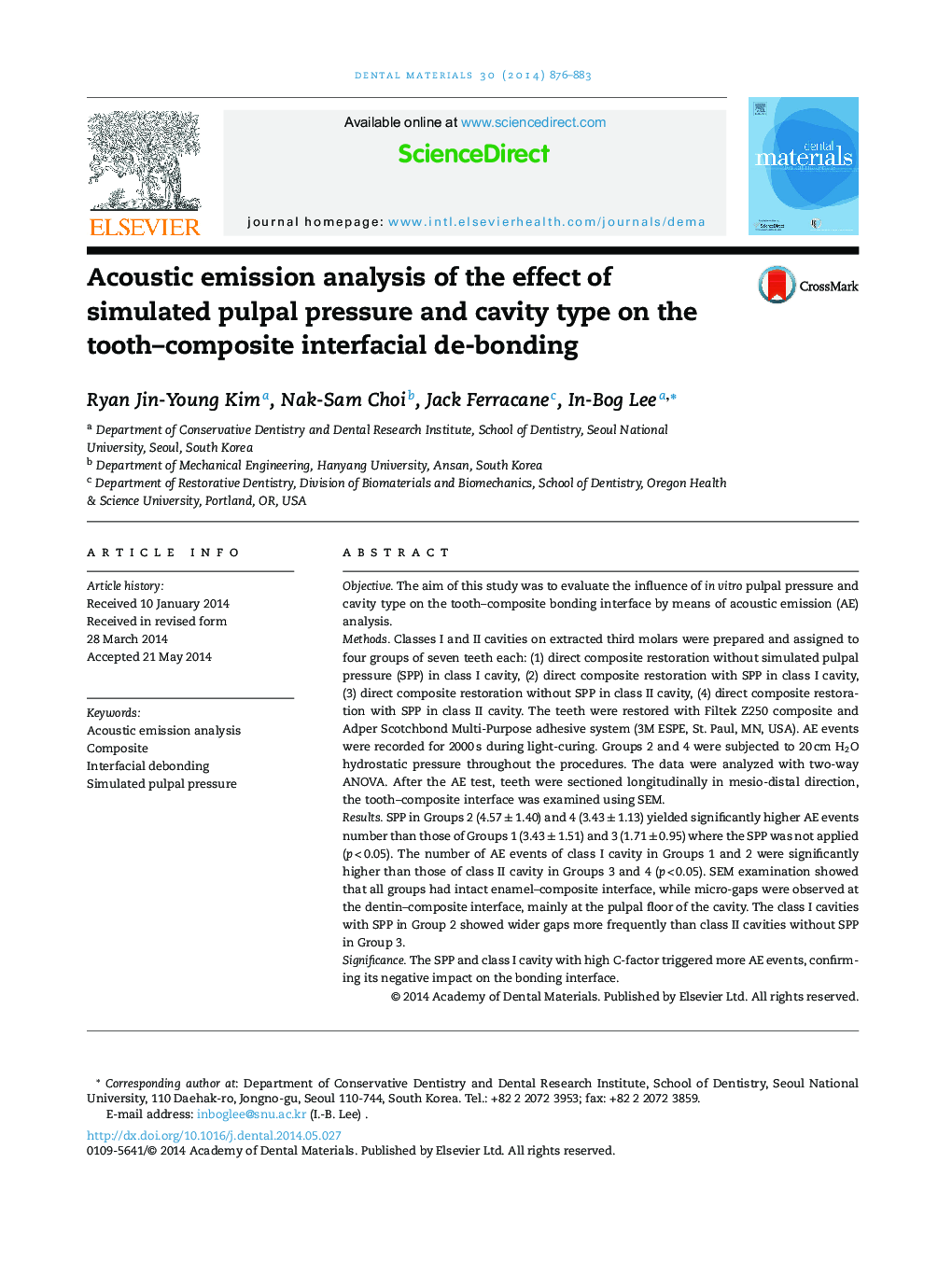| کد مقاله | کد نشریه | سال انتشار | مقاله انگلیسی | نسخه تمام متن |
|---|---|---|---|---|
| 1420824 | 986382 | 2014 | 8 صفحه PDF | دانلود رایگان |
ObjectiveThe aim of this study was to evaluate the influence of in vitro pulpal pressure and cavity type on the tooth–composite bonding interface by means of acoustic emission (AE) analysis.MethodsClasses I and II cavities on extracted third molars were prepared and assigned to four groups of seven teeth each: (1) direct composite restoration without simulated pulpal pressure (SPP) in class I cavity, (2) direct composite restoration with SPP in class I cavity, (3) direct composite restoration without SPP in class II cavity, (4) direct composite restoration with SPP in class II cavity. The teeth were restored with Filtek Z250 composite and Adper Scotchbond Multi-Purpose adhesive system (3M ESPE, St. Paul, MN, USA). AE events were recorded for 2000 s during light-curing. Groups 2 and 4 were subjected to 20 cm H2O hydrostatic pressure throughout the procedures. The data were analyzed with two-way ANOVA. After the AE test, teeth were sectioned longitudinally in mesio-distal direction, the tooth–composite interface was examined using SEM.ResultsSPP in Groups 2 (4.57 ± 1.40) and 4 (3.43 ± 1.13) yielded significantly higher AE events number than those of Groups 1 (3.43 ± 1.51) and 3 (1.71 ± 0.95) where the SPP was not applied (p < 0.05). The number of AE events of class I cavity in Groups 1 and 2 were significantly higher than those of class II cavity in Groups 3 and 4 (p < 0.05). SEM examination showed that all groups had intact enamel–composite interface, while micro-gaps were observed at the dentin–composite interface, mainly at the pulpal floor of the cavity. The class I cavities with SPP in Group 2 showed wider gaps more frequently than class II cavities without SPP in Group 3.SignificanceThe SPP and class I cavity with high C-factor triggered more AE events, confirming its negative impact on the bonding interface.
Journal: Dental Materials - Volume 30, Issue 8, August 2014, Pages 876–883
